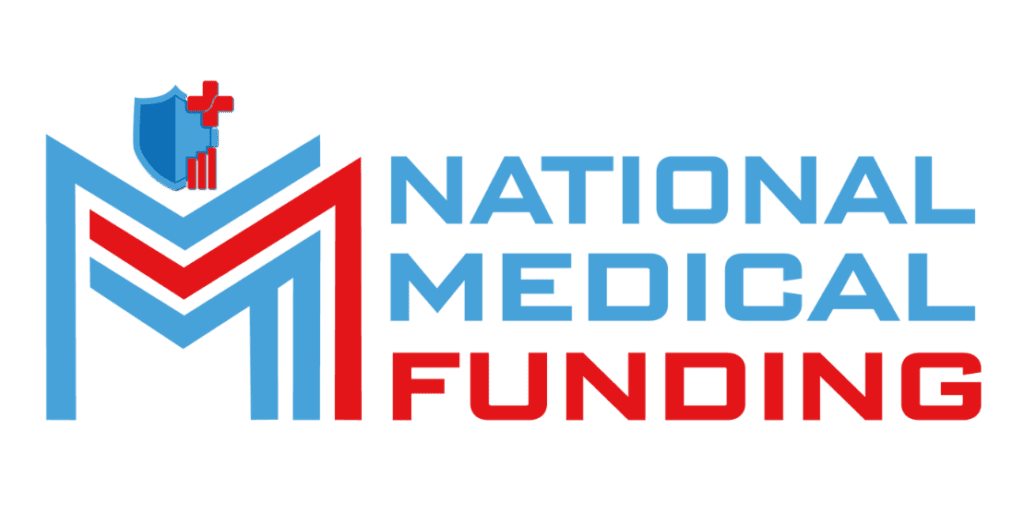
Beyond Equipment: 4 Strategic Ways Medical Pr
Running a successful medical practice only leads to gre...

Saturday and Sunday – CLOSED
support@nationalmedicalfunding.com



Running a successful medical practice takes more than skill—it takes strong financial backing. But traditional lending can sometimes feel like a maze of paperwork and credit checks. That’s where asset-based lending steps in.
This flexible funding option allows physicians to leverage their own assets—like equipment, accounts receivable, or even investments—to unlock working capital. With the help of modern healthcare finance solutions, doctors can now access funding faster, with fewer restrictions, and without putting day-to-day operations on hold.
In this guide, we’ll break down everything you need to know about asset-based lending—how it works, when it’s ideal, and how to use it strategically to grow your practice.
Asset-based lending (ABL) is a financing option where you use your assets as collateral to secure a loan or line of credit. In other words, instead of relying on your credit score alone, lenders evaluate the value of your owned assets—such as medical equipment, property, or accounts receivable.
This makes asset-based lending especially appealing for healthcare professionals who may have strong physical or receivable assets but limited cash flow. With the right healthcare financing companies, physicians can get flexible funding to cover expenses, invest in technology, or expand services without taking on unmanageable debt.
To better understand equipment-related financing options, check out When to Lease vs. Own: A Financial Strategy for High-Value Medical Equipment.
Medical practices often face unpredictable revenue cycles. Insurance reimbursements can be delayed, while operational costs continue. That’s why asset-based lending has become a go-to choice for healthcare professionals—it provides liquidity without waiting months for payments.
Unlike traditional loans, asset-based lending adapts to your financial structure. If you have valuable assets but limited cash on hand, ABL helps bridge that gap. Many healthcare financing companies even design custom solutions for clinics, hospitals, and private practitioners to maintain stability during slow months.
This makes it one of the most practical healthcare finance solutions for modern medical practices seeking flexibility and control.
Here’s how the process generally unfolds:
Step | What Happens |
1. Asset Evaluation | The lender assesses your collateral—equipment, property, or receivables. |
2. Loan Offer | Based on asset value, you receive a line of credit or lump-sum funding. |
3. Draw & Repay | You use the funds for operations, then repay as your cash flow improves. |
4. Ongoing Monitoring | The lender periodically re-evaluates the assets for continued funding eligibility. |
The flexibility here is key—you can use your available resources to secure the funding your practice needs. It’s a smart form of medical financing because it transforms underutilized assets into growth capital.
If you’re launching a new facility, you may also find Financing Your Veterinary Practice Startup: A Complete Guide to Launching Your Clinic useful for understanding startup funding structures.

Not every asset qualifies for lending, but many within the medical sector hold significant value. Typical collateral includes:
The great thing about working with experienced healthcare financing companies is that they understand these assets’ true worth. Traditional banks may undervalue medical tools, but specialized healthcare lending firms often recognize their ongoing operational importance.
So, why do so many physicians choose this route? Here are the top advantages:
With modern healthcare finance solutions, asset-based lending can help stabilize your practice, especially during insurance delays or expansion periods.
Want to learn how to maintain steady cash flow? Visit Bridging the Payer Gap: How Healthcare Finance Solutions Stabilize Your Practice’s Cash Flow.
Like any financial tool, asset-based lending has its downsides. It’s important to know them before committing.
First, lenders typically require ongoing reporting and asset revaluation. This can mean more administrative work. Second, if asset values fluctuate—say, due to depreciation—your available credit may decrease over time.
Also, defaulting on payments can lead to losing the asset, so it’s crucial to borrow responsibly. That said, reputable healthcare financing companies will work with you to structure loans realistically based on your practice’s capacity.
When comparing lenders, remember to read the fine print. Each healthcare lending institution has its own rules for asset valuation and repayment flexibility.
While both funding methods serve medical professionals, their core differences are worth noting:
Aspect | Asset-Based Lending | Traditional Medical Loan |
Collateral | Backed by practice or personal assets | Typically unsecured or backed by credit |
Approval Time | Fast, asset-driven approval | Longer, credit-based approval |
Flexibility | High—adjusts to asset values | Fixed terms and rigid structure |
Ideal For | Practices with tangible assets but cash-flow issues | Established practices with strong credit |
In essence, asset-based lending gives physicians more control and speed—two qualities often missing in traditional financing.
For more clarity on lender differences, check out The Real Differences Between a Specialty Healthcare Lending Company and a Traditional Bank.

Asset-based lending works best when your practice has high-value assets but limited liquidity. For example, if your accounts receivable are strong but payments are delayed, ABL can help cover payroll, rent, or equipment upgrades.
It’s also a great option during growth phases—such as adding new departments or adopting new technologies. By converting your assets into working capital, you ensure that expansion doesn’t disrupt daily operations.
Remember, not all healthcare lending options are equal. Choose lenders that understand the unique financial cycles of medical practices to avoid rigid repayment structures.
Finding the right financial partner is just as important as choosing the right funding type. When evaluating healthcare financing companies, look for:
A reliable partner will not just provide funds but also guide you through effective financial planning. Asset-based lending, when managed with the right healthcare finance solutions, can be the foundation for lasting financial health and practice growth.
At the end of the day, your practice’s success depends on how effectively you manage both your financial and operational resources. Asset-based lending turns what you already own into leverage for growth—helping you unlock capital when traditional loans fall short.
With the right medical financing strategy and a trusted lender, you can keep your practice thriving, even during unpredictable times.
So, whether you’re planning to expand, modernize, or simply stabilize your cash flow, it’s time to make your assets work smarter—not harder—for your future success.
Unlock flexible funding through trusted healthcare finance solutions today. Whether you’re expanding or stabilizing, explore smart financing options tailored for medical professionals.
Running a successful medical practice only leads to gre...
The Evolving Role of the Medical Practice Manager ...

Fuel your medical practice’s growth with financial solutions tailored to your needs. We’re here to support independent practitioners and group practices with strategies built for success.
Mon Fri: 8:00am – 6:00pm
Saturday: Closed
Sunday: Closed
Copyright © 2025 National Medical Funding